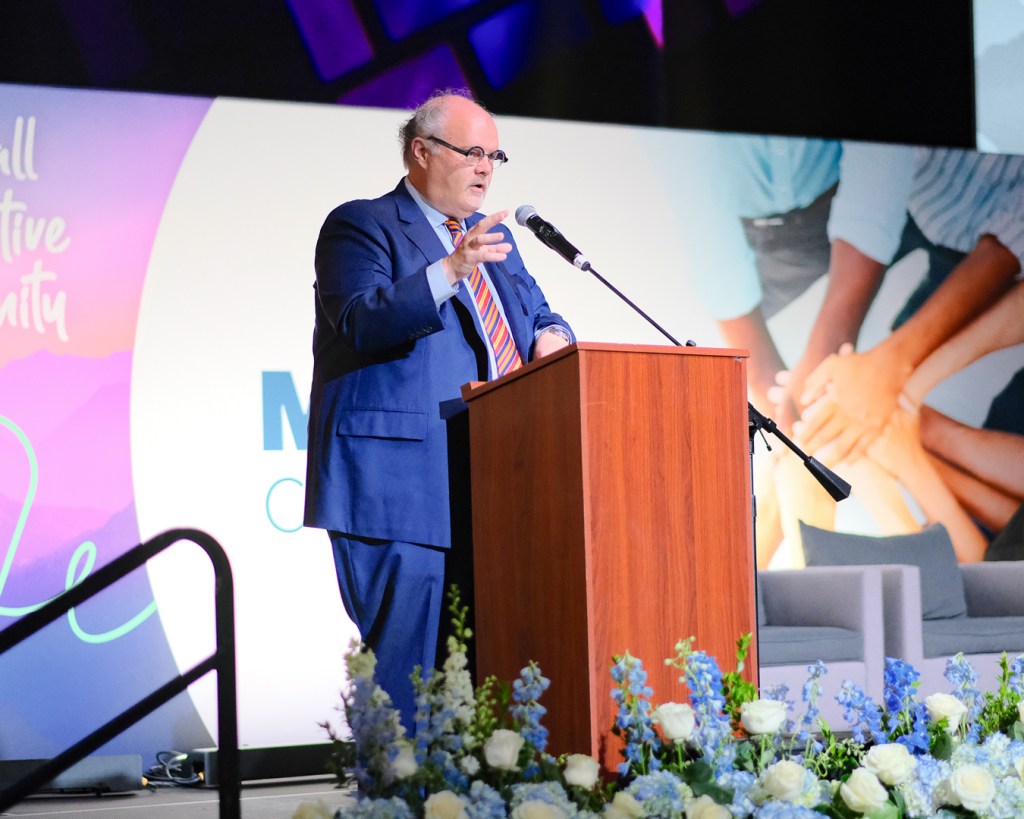
As many as 300,000 people are at risk of losing their health insurance in the Inland Empire due to a combination of federal and state policy changes.
In the Coachella Valley alone, about 36,292 people are projected to lose health care between September 2025 and December 2027, according to data from the Inland Empire Health Plan, which administers Medi-Cal locally. That’s about 29% of the population currently covered by IEHP.
Jarrod B. McNaughton, the chief executive officer at IEHP, said the insurance losses stem from a combination of factors. That includes changes in the California state budget, the “Big Beautiful Budget Bill” that Congress passed this summer, and the expiring Obamacare tax credits that some Democrats are fighting to extend during the current government shutdown.
It all points to just how complex modern health care has become.
“It is literally like a Jenga puzzle because of all of these pieces that we have,” McNaughton told the Independent. “We’ve created this incredibly unwieldy system where if you pull one piece out of that Jenga puzzle, the whole thing starts to collapse. And we’re starting to see some of that now.”
Right now, IEHP has about 1.5 million members. But around 300,000 are likely to lose coverage due to policy changes, including:
• About 150,000 people who are undocumented and are currently covered under Medi-Cal could gradually lose access. McNaughton explained that federal Medicaid rules clash with the state’s decision to extend coverage. The state also won’t be adding anyone new, and will eventually require a premium payment for folks who want to stay on.
• IEHP estimates around 20,000 people may stop enrolling in IEHP due to the end of the advance premium tax credit. These have been used to offset the cost of health care plans purchased on the Covered California marketplace.
• Others include those who may stop enrolling because the requirements and paperwork to get Medi-Cal are becoming too onerous. That includes the new federal work requirements that would begin in 2027, according to the Kaiser Family Foundation.
As bad as it is for people to lose their health insurance, the effects go well beyond those individuals, McNaughton said. The risk pool shifts; for instance, if a co-pay is required for people who are undocumented to stay on, healthy people may not participate, but those with more health issues may want to stay insured.
McNaughton also said the region could be affected due to a provision in the federal budget bill that cuts what’s called provider taxes and state-directed payments. These have helped boost reimbursement rates for physicians and hospitals, but will be pushed down in the next few years under the new federal budget bill. McNaughton said he’s particularly worried about hospitals closing down.
“If you start to see hospitals or emergency rooms close within the state or the country, that is a huge worry, because it doesn’t matter if you’re on Medicare, or if you have commercial insurance or Medi-Cal,” he said. “It’s one door for everybody.”
Health-care partners around the region are preparing to deal with the losses as best they can. In some cases, this means making plans to fund more mobile health clinics for low-income communities. In others, it means figuring out business plans for hospitals that may be receiving less money from state and federal programs.
McNaughton’s advice to residents currently enrolled in IEHP is to make sure they complete and submit any paperwork they receive to remain eligible. He also said people should continue to seek medical care, even “with all of this going on.”
A survey from the IEHP Foundation, the nonprofit arm of IEHP that supports health equity initiatives, surveyed 70 health nonprofits in the region about how their funding streams have been affected by the new federal laws and executive orders—and 92% of the organizations that received federal funding have seen either a decrease, a pause or a termination of that funding. About 67% indicated that funding cuts or changes to eligibility requirements would directly impact their communities.
IEHP Foundation CEO Greg Bradbard told the Independent the organization is “very concerned about the anticipated changes to Medicaid requirements and how it is going to impact access to health care across our region.”
The Coachella Valley already struggles with equitable access to care. Out of just more than 1,000 hospital beds, 86 percent of them are located in the western Coachella Valley (i.e., Palm Springs or Rancho Mirage), according to Desert Healthcare District reports. Yet many lower-income residents are concentrated in eastern parts of the valley—particularly in communities farthest east like North Shore and Mecca, as well as those north of the interstate like Garnet, Sky Valley and Thousand Palms.
Chris Christensen, chief executive officer of the Desert Healthcare District, said the district is still determining what the full effects of the fallout will be. While it doesn’t provide care directly, the district supports medical partners across the region. Recent grants, for instance, have gone to Coachella Valley Volunteers in Medicine, the Inland Empire Ronald McDonald House and Cancer Support Community Los Angeles for its extended Coachella Valley programming.
Right now, the district is beginning to build out its next long-term strategic plan, and Christensen said the current landscape of potential health-care coverage losses will play into that. For instance, the district has two mobile health-care units that it uses to help get care to underserved communities—including at events focused on women’s health—and Christensen said that’s one area that it might look at increasing.
“My belief is that the mobile medical program could expand to allow outreach to those residents who are ultimately going to lose insurance coverage,” he said.
Christensen said properly addressing health care gaps and uninsured populations needs to result from a collaborative effort between care providers, health care districts, clinics and nonprofits.
In the meantime, McNaughton’s advice to residents currently enrolled in IEHP is to make sure they complete and submit any paperwork they receive to remain eligible. He also said people should continue to seek medical care, even “with all of this going on.”
“Make sure you’re doing the right thing for you and your family to get the care that you need,” he said.
This story was made possible in part by a grant from the IE Journalism Innovation Hub + Fund of the Inland Empire Community Foundation. To submit ideas, comments or questions to the Coachella Valley Independent about housing in the desert, head to this Google form.
Health Care Crisis: Local Medical Providers Prepare for an Upcoming Surge of Uninsured Individuals is a story from Coachella Valley Independent, the Coachella Valley’s alternative news source.

